




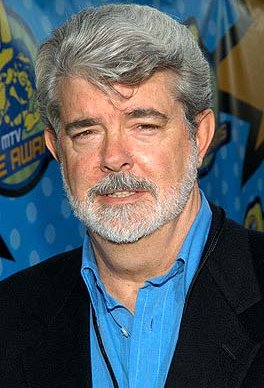
Before young Lucas became obsessed with the movie camera, he wanted to be a race car driver, but a near fatal accident in his souped-up Fiat just days before his high school graduation quickly changed his mind. Instead, he attended community college and developed a passion for cinematography and camera tricks. Following the advice of a friend, he transferred to the University of Southern California filmmaking school. There he produced a short futuristic Sci-Fi film called THX-1138:4EB, and garnered a comfortable spot under the wing of Francis Ford Coppola, who took an active interest in unleashing new filmmaking talent. Coppola convinced Warner Brothers to make a feature length version of the film, and although a few critics recognized some philosophical depth behind all the technical wizardry, THX-1138 (re-titled) flopped terribly in its 1971 release.
Although intimidated by the failure of his first film, Lucas went back to work on his next project, American Graffiti. Released in 1973, the film featured such burgeoning young talents as Ron Howard, Richard Dreyfuss, and Harrison Ford, and was recognized as a stunning portrait of listless American youth in 1962 depicting, in Lucas' own words, "a warm, secure, uninvolved life." The film, made for only $780,000, grossed $50 million in the box office. It was nominated in five categories at that year's Academy Awards, including Best Picture, Best Screenplay, and Best Director for Lucas, and is still considered one of the most successful low budget features ever made.
Now that Lucas had won back the confidence of his supporters, he set out to make a children's Saturday morning serial that would be part fairy tale, part Flash Gordon, and complete fantasy and adventure set in the imaginary frontier of outer space. The project eventually evolved into a full-length feature entitled, Star Wars. In its 1977 release, Star Wars blew audiences away with its awe-inspiring special affects, fantastical landscapes, captivating characters (the erroneous pairing of two bumbling droids providing, ironically, the most heart and comic relief), and the familiar resonance of popular myth and fairy tale. Made for $11 million, the film grossed over $513 million worldwide during its original release. Lucas continued the story of the Jedi Knights and the Dark Side in The Empire Strike Back (1980) and The Return of the Jedi (1983). In the meantime, he set up a state-of-the-art special effects company, Industrial Light & Magic (ILM), as well as a sound studio, Skywalker Sound, and began to execute more and more control over the finished product of his films. He eventually built his own moviemaking "empire" outside of the controlling influence of Hollywood in the hills of Marin Country, California.



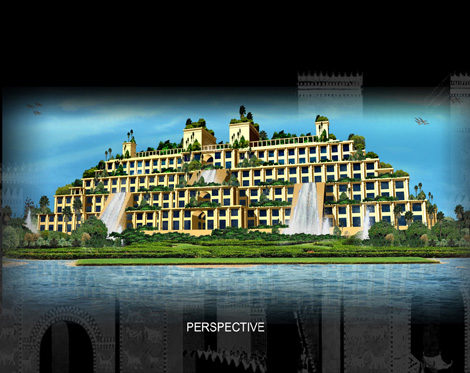 his is one of the most venerated marvels among the seven wonders of world.
his is one of the most venerated marvels among the seven wonders of world. Location:
This wonder of the world was located in the east bank of Euphrates, South of Baghdad in Iraq.
Description:




 Née Alicia Christian Foster, Jodie was born November 19, 1962, in Los Angeles, California. Her father, Lucius, left the family before her birth, leaving Alicia and her three siblings to be raised by their Hollywood publicist mother, Evelyn Foster. Given her occupation, Evelyn had little problem finding acting work for those of her children that expressed interest in taking it on, and Alicia made her first on-screen appearance at the age of three, in a Coppertone sunscreen commercial.
Née Alicia Christian Foster, Jodie was born November 19, 1962, in Los Angeles, California. Her father, Lucius, left the family before her birth, leaving Alicia and her three siblings to be raised by their Hollywood publicist mother, Evelyn Foster. Given her occupation, Evelyn had little problem finding acting work for those of her children that expressed interest in taking it on, and Alicia made her first on-screen appearance at the age of three, in a Coppertone sunscreen commercial.
 professional turmoil
professional turmoil critics silence-d
critics silence-d
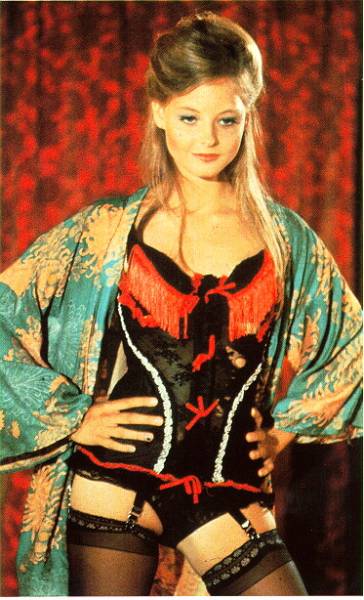
 Born and raised in Brittany, France, Yelle is known for her spirited, explicit lyrics, laid over a booty-shaking pop electro beat. This musical prowess was expertly showcased in 2005 with the track "Je Veux Te Voir" ("I Wanna See You"). The minute this humorous track (taking a friendly jab at French rapper Cuizinier) was placed on her MySpace page (www.myspace.com/iloveyelle), it garnered 2000 plays in just two days.
Born and raised in Brittany, France, Yelle is known for her spirited, explicit lyrics, laid over a booty-shaking pop electro beat. This musical prowess was expertly showcased in 2005 with the track "Je Veux Te Voir" ("I Wanna See You"). The minute this humorous track (taking a friendly jab at French rapper Cuizinier) was placed on her MySpace page (www.myspace.com/iloveyelle), it garnered 2000 plays in just two days. Yelle grew up with music, her dad being a famous musician in the Côtes d'Armor region, where she still lives today. She played the piano, then went on to acting, and played in a few bands that never made it past the rehearsals, but whatever: she knew she was a born performer.
Yelle grew up with music, her dad being a famous musician in the Côtes d'Armor region, where she still lives today. She played the piano, then went on to acting, and played in a few bands that never made it past the rehearsals, but whatever: she knew she was a born performer. Last autumn, for her first show, Yelle, bold and audacious, was invited to Paris Paris, one of Paris' trendiest venues, packed on the occasion and waiting to hear the young provincial's crazy lyrics and off the hook loops. The set, very rock and in-your-face, was a success as the crowd all joined in to sing the lyrics to "Je veux te voir…." ("I wanna see you") becoming in just a few months a cult hit on dance floors from Paris to London and New York… Now very much at ease on stage with her fluorescent tights, the brunette with attitude drops her first album, which echoes a certain nostalgia for the golden years of French electro-pop (Etienne Daho, Elli & Jacno, Alain Chamford, Taxi Girl or Lio) but all boosted with her own flavored groove and subtle vibe into some booty-pop, revealing the story of a shameless girl with a strong character.
Last autumn, for her first show, Yelle, bold and audacious, was invited to Paris Paris, one of Paris' trendiest venues, packed on the occasion and waiting to hear the young provincial's crazy lyrics and off the hook loops. The set, very rock and in-your-face, was a success as the crowd all joined in to sing the lyrics to "Je veux te voir…." ("I wanna see you") becoming in just a few months a cult hit on dance floors from Paris to London and New York… Now very much at ease on stage with her fluorescent tights, the brunette with attitude drops her first album, which echoes a certain nostalgia for the golden years of French electro-pop (Etienne Daho, Elli & Jacno, Alain Chamford, Taxi Girl or Lio) but all boosted with her own flavored groove and subtle vibe into some booty-pop, revealing the story of a shameless girl with a strong character. So "85A" (a French breast measurement), very close to the tune of "Banana Split" is dedicated to small breasts (Pamela would never have given me self confidence on that side. Thankfully Jane Birkin was a classier woman). "Les Femmes" ("Women") slyly talks about lesbian temptation, while "Mon Meilleur Ami" ("My Best Friend") and its bouncy keyboards is an ode to dildos (you are all so small, my best friend, I take you with me everywhere I go. I talk to you like you are a sweet and sensitive man; the only thing that annoys me about you is I have to change your batteries). Yelle has broken away from feminine insecurity, no more nostalgia! (I sing in 80s French, I don't look back to the past, but there were still good times back then" she sings in "Amour Du Sol" literally "Love Of The Soil"). Yelle is a liberated woman and speaks freely, whether it be about sex, jogging, boys who drive her crazy or her best friend. Yelle, winks at boys like a playful brat, but still casts a very cynical eye to the world surrounding her.
So "85A" (a French breast measurement), very close to the tune of "Banana Split" is dedicated to small breasts (Pamela would never have given me self confidence on that side. Thankfully Jane Birkin was a classier woman). "Les Femmes" ("Women") slyly talks about lesbian temptation, while "Mon Meilleur Ami" ("My Best Friend") and its bouncy keyboards is an ode to dildos (you are all so small, my best friend, I take you with me everywhere I go. I talk to you like you are a sweet and sensitive man; the only thing that annoys me about you is I have to change your batteries). Yelle has broken away from feminine insecurity, no more nostalgia! (I sing in 80s French, I don't look back to the past, but there were still good times back then" she sings in "Amour Du Sol" literally "Love Of The Soil"). Yelle is a liberated woman and speaks freely, whether it be about sex, jogging, boys who drive her crazy or her best friend. Yelle, winks at boys like a playful brat, but still casts a very cynical eye to the world surrounding her. Yelle may be young and pretty but she is also a very explosive character entering a slightly rigid French pop scene. This stage freak with a unique flow is fully driving the new non-aggressive girl power scene, focusing on delivering kick-ass lyrics. She also doesn't take herself seriously and is refreshingly laidback, especially when she proudly covers the song "A Cause Des Garcons" ("What We Do For Boys") a French ‘80s anthem. Let's all sing along to the lyrics: (What we do for boys, we wear stockings, we fight each other, boys make us worry, we cry all the time, that's what we do for boys").
Yelle may be young and pretty but she is also a very explosive character entering a slightly rigid French pop scene. This stage freak with a unique flow is fully driving the new non-aggressive girl power scene, focusing on delivering kick-ass lyrics. She also doesn't take herself seriously and is refreshingly laidback, especially when she proudly covers the song "A Cause Des Garcons" ("What We Do For Boys") a French ‘80s anthem. Let's all sing along to the lyrics: (What we do for boys, we wear stockings, we fight each other, boys make us worry, we cry all the time, that's what we do for boys").
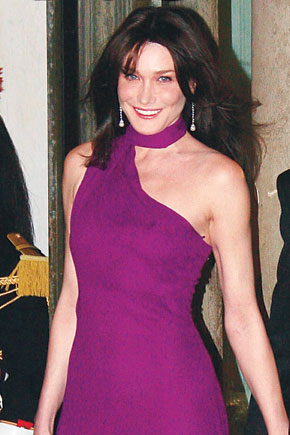
Carla Bruni Tedeschi was born the 23rd of December 1968, in Turin, Italy. The heiress of a tire manufacturing fortune from her native city, Carla probably didn't even need to pursue the lucrative modeling career she presently has, considering the fortune that awaited her. Bruni's high-profile affairs with rock stars Mick Jagger and Eric Clapton and tycoon Donald Trump have made her a favorite item in celebrity gossip columns and tabloids around the world. BusinessAge magazine listed Bruni as one of the world's top-20 highest-paid models, with a yearly salary of $7.5 million (1998). She appeared in Catwalk (1995), Robert Leacock's documentary about the modeling industry and in 1998, Versace choose her as the model for the company's fragance ads.
She is a French citizen and is currently the First Lady of France, after marrying French President Nicolas Sarkozy in February 2008.



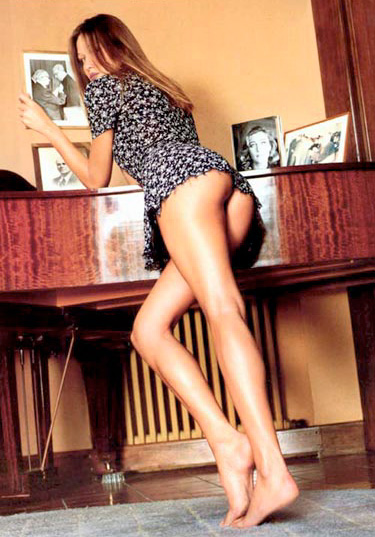

The Great wall of china as called is the largest building construction ever carried out, running to around 6,400 Km east to west from gulf of china to the yellow sea to a point in Central Asia. The construction of this fortification dates from 4th century B.C. shih Huang-ti in 214 B.C.
The first emperor of United China connected the discontinuous walls with watch towers with was used to guard as the rampart. It was mainly built against Hsiung-nu or called he Huns. The wall was constructed partly of masonry and partly of earth and was faced with brick in the eastern portion. It was again rebuilt in the 15th and 16th century. The basic Wall is 30feet height and the towers are 40m high. The great wall lies from 39.49 degrees North to 98.18 degrees East. The Yen Mountains are the world famous ones and has peak up to 4,900 feet above main sea level. The great wall has it crest over these mountains in a zigzag manner. According to the words of the Astronauts and space researchers, the only clear and visible one from the moon on earth is only “The Great Wall”. A statement said “The Great wall is the only visible thing from Satellite”.

China was the only country with the oldest civilization and it led up to 2000 Years from 221 B.C. to 1911 A.D. and remained as a united one until the series of powerful rules. The great walls construction was carried on only during this period and the main reason why the wall bent at some occasions was this because the capitals were shifted, the borders were changed and mainly the country was captured by fierce tribes of the period including the Mongols and however for the most of the history of china, it was the only developed country of that period in art and technology only because of its construction of the great wall. The inventions of paper, porcelain and gunpowder were the main during the construction of the great wall. The inventions of paper, porcelain and gun power were the main construction items used during the construction of great wall.
 After the construction of the great wall the Qin empire was the first empire to be protected by the great wall which is now the northern and eastern china. The wall was built there as a defense against the Hostile tribal attacks from central Asia. The Qin warriors used to walk on the walls as security and the warriors from the great wall attacked the enemies and this was mainly the reason for the expansion of their empire. The great wall is still now the longest man made structure on earth. It was built before 2,200 years with about 3,00,000 slaves. More than 90% of the slaves who built the great wall were brought from Macao a tiny peninsula in the southeast china and was a Portuguese colony at that time. It was returned back to china in 1999. It was a famous tourist center at that time and cheap labor was available there.
After the construction of the great wall the Qin empire was the first empire to be protected by the great wall which is now the northern and eastern china. The wall was built there as a defense against the Hostile tribal attacks from central Asia. The Qin warriors used to walk on the walls as security and the warriors from the great wall attacked the enemies and this was mainly the reason for the expansion of their empire. The great wall is still now the longest man made structure on earth. It was built before 2,200 years with about 3,00,000 slaves. More than 90% of the slaves who built the great wall were brought from Macao a tiny peninsula in the southeast china and was a Portuguese colony at that time. It was returned back to china in 1999. It was a famous tourist center at that time and cheap labor was available there. 




 This is one of the interesting stories to know about. This statue is associated with our favorite Olympic games which is being a widely watched event all over the world. The only sporting marvel among all the seven wonders of world
This is one of the interesting stories to know about. This statue is associated with our favorite Olympic games which is being a widely watched event all over the world. The only sporting marvel among all the seven wonders of world Location:
Olympia the ancient Greek city.
Description:
In ancient times the Greek city states used to play games every 4 years. This is what is now called as Olympic games. During those times truce is declared and wars are stopped. Players and athletes from all over the places traveled to a place in Greece called Peloponnesus. These Olympic games were started during 776 BC. Incidentally this is the period when Green calendar starts. These Olympic games were held in honour of their King of gods, Zeus. He is also known as God of Jupiter.
During the 5th century, they decided to have a temple for their king of gods and Libon was assigned the task of completing the work. Libon designed the temple and Pheidias was asked to build a big statue for Zeus. Pheidias had good techniques with him to build big statues. He used wooden frame to make the outer casings for the statues in gold. His workshop still remains and incidentally its size can accommodate building of such big statues. He built a statue of approximately 40 ft height.
 The statue was so high that, even while sitting the head of the god Zeus was near the roof of the temple. This is what amazed the historians and poets of those times. This simply illustrates that the god Zeus is so big that even if he stands, the whole roof would come off its place. Zeus was seated on a throne, draped in gold robe. Zeus had a wreath around his head and held a figure of his messenger in his right hand.
The statue was so high that, even while sitting the head of the god Zeus was near the roof of the temple. This is what amazed the historians and poets of those times. This simply illustrates that the god Zeus is so big that even if he stands, the whole roof would come off its place. Zeus was seated on a throne, draped in gold robe. Zeus had a wreath around his head and held a figure of his messenger in his right hand. Seven Wonders of the World - Statue of Zeus
Seven Wonders of the World - Statue of Zeus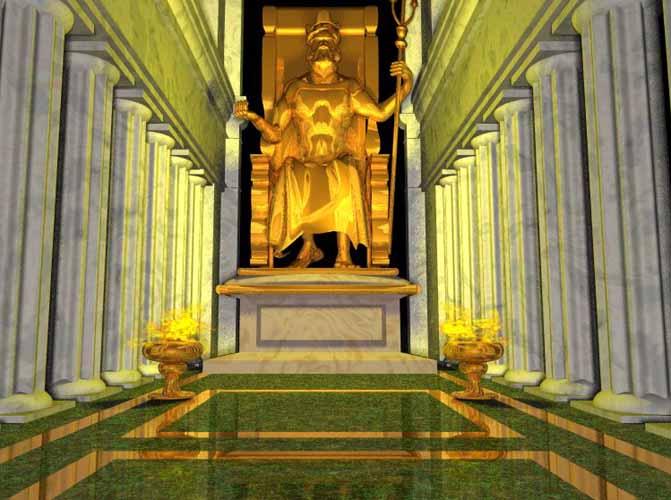 Seven Wonders of the World - Statue of Zeus
Seven Wonders of the World - Statue of Zeus Seven Wonders of the World - Statue of Zeus
Seven Wonders of the World - Statue of Zeus Seven Wonders of the World - Statue of Zeus
Seven Wonders of the World - Statue of Zeus